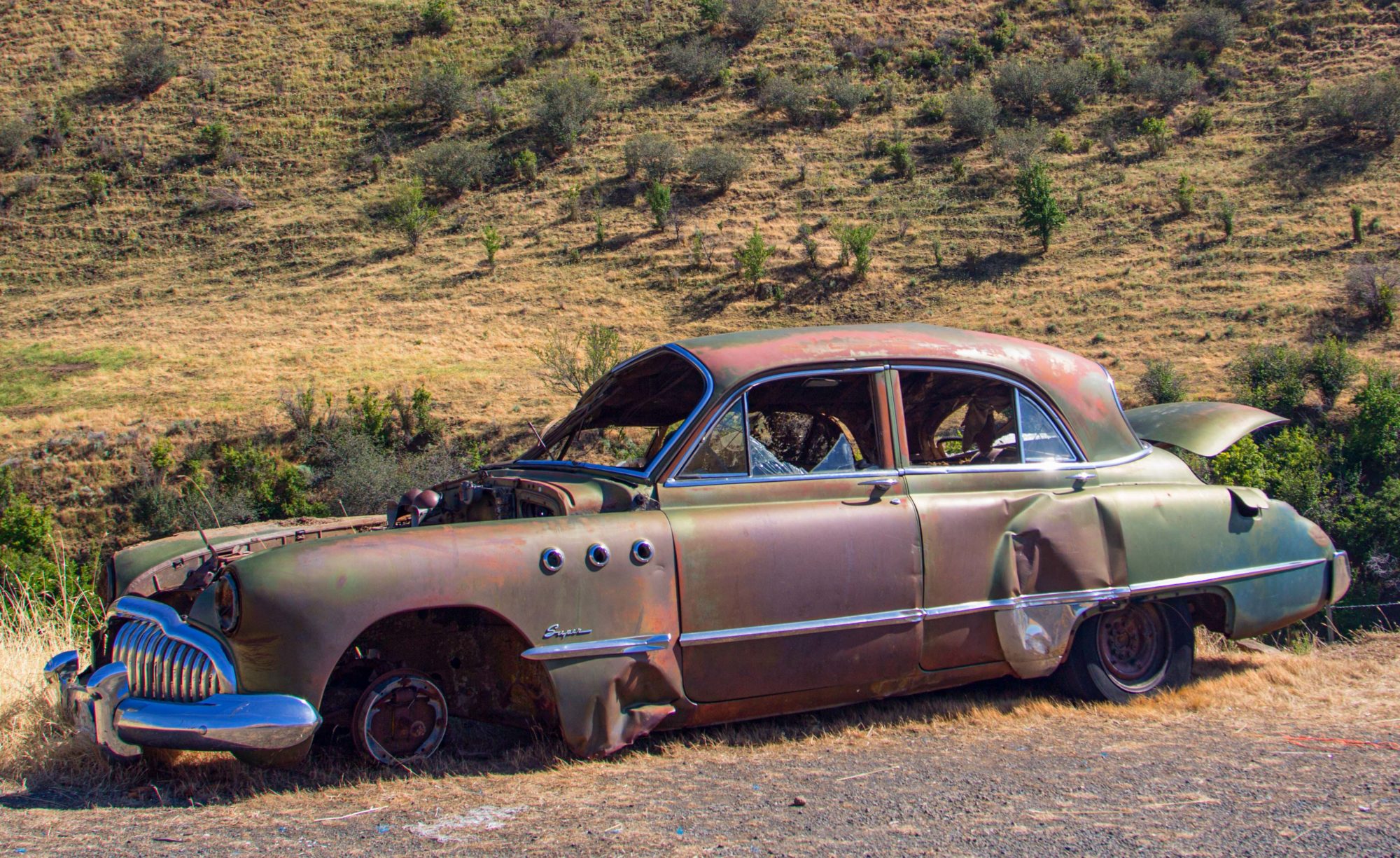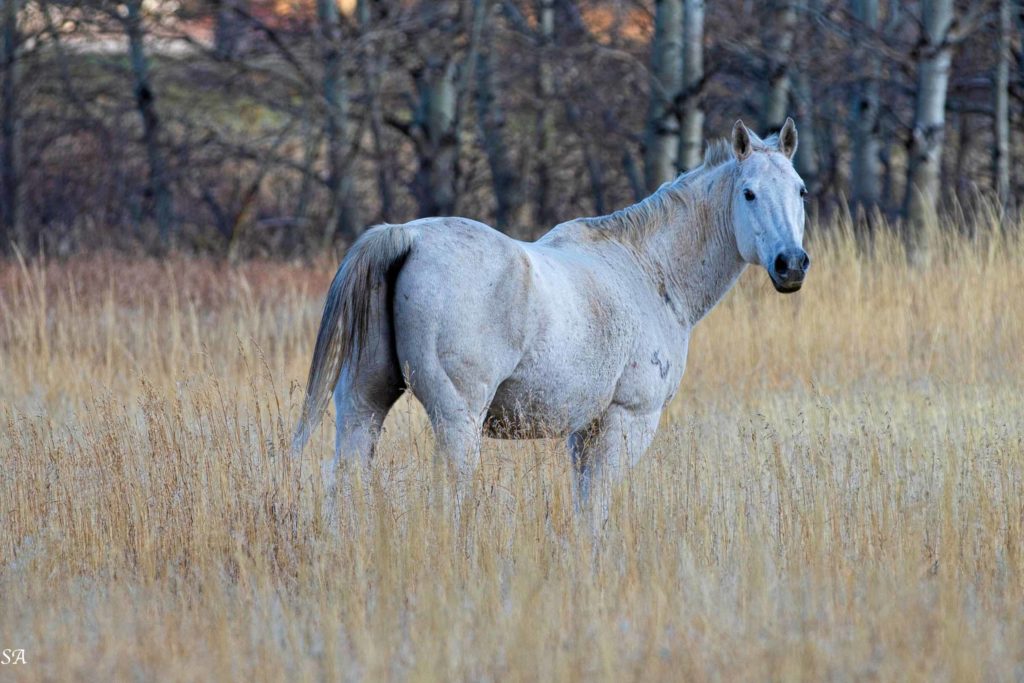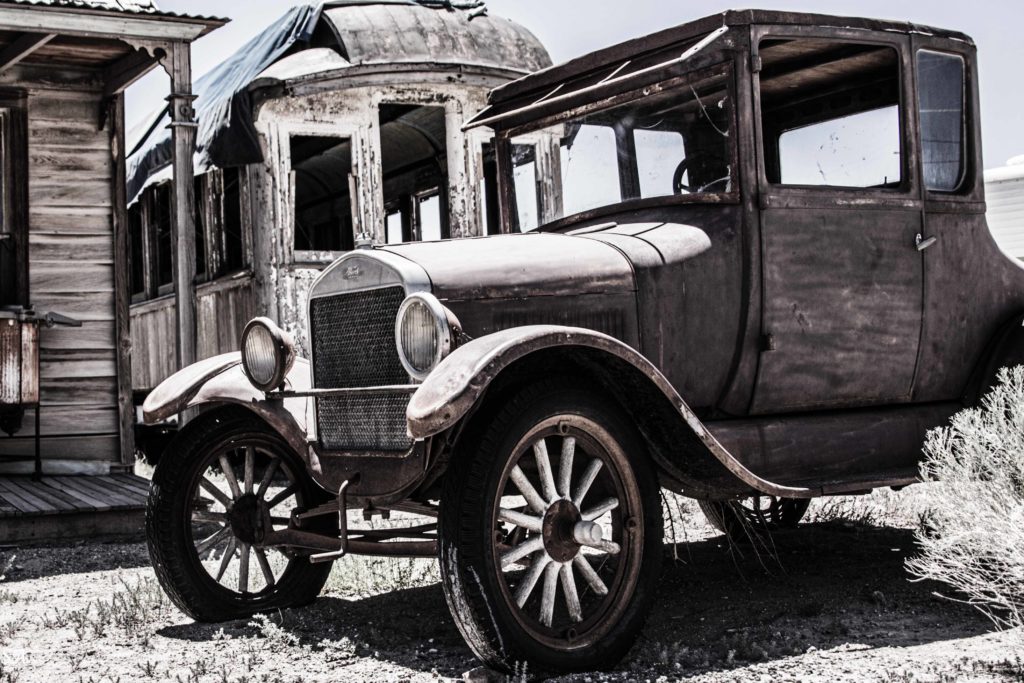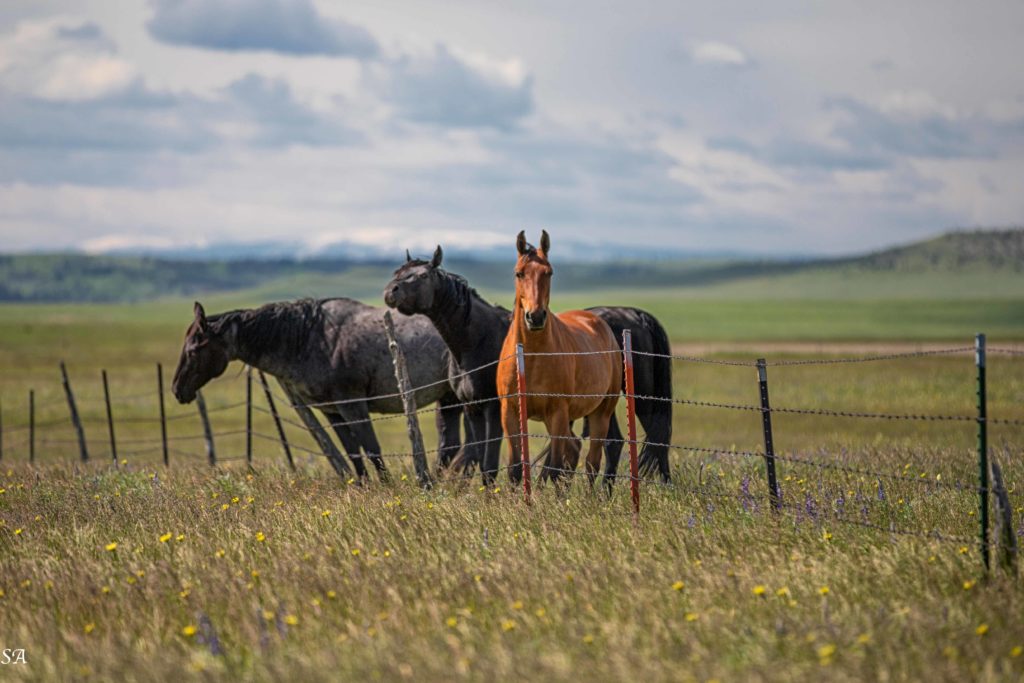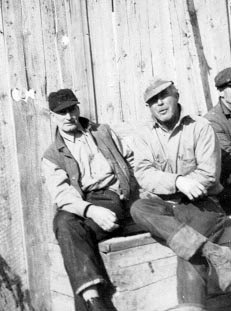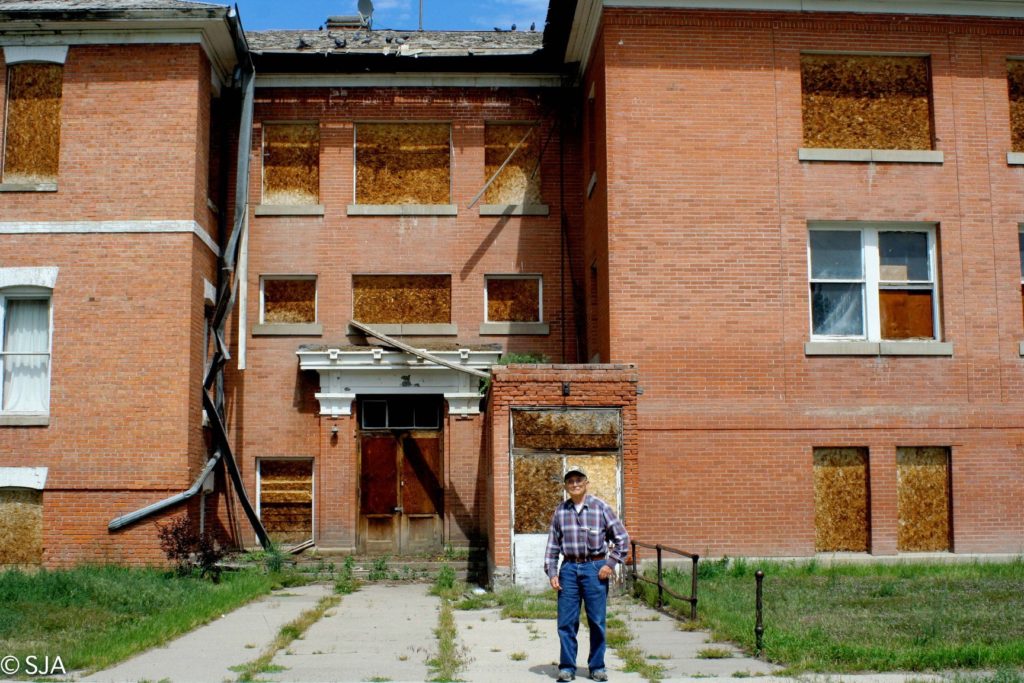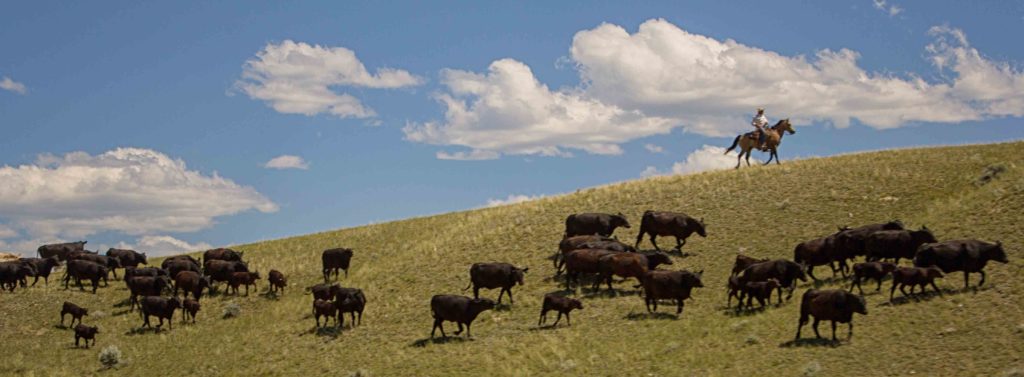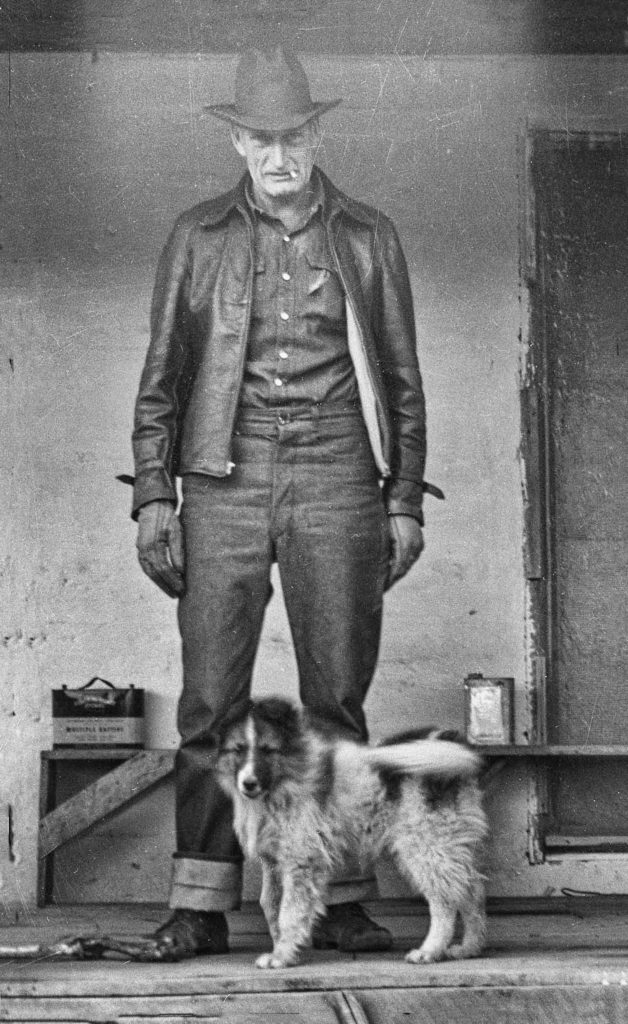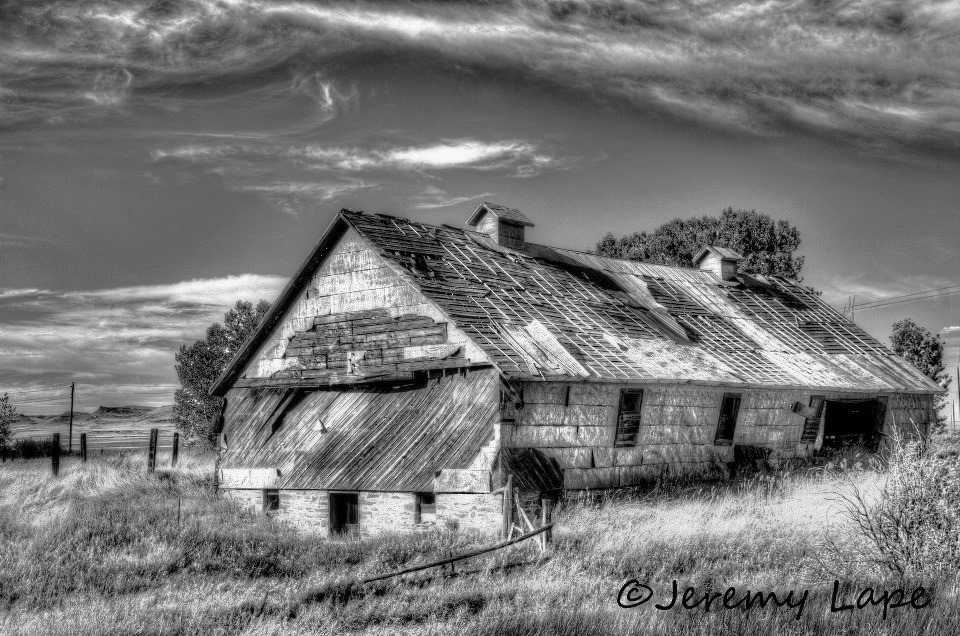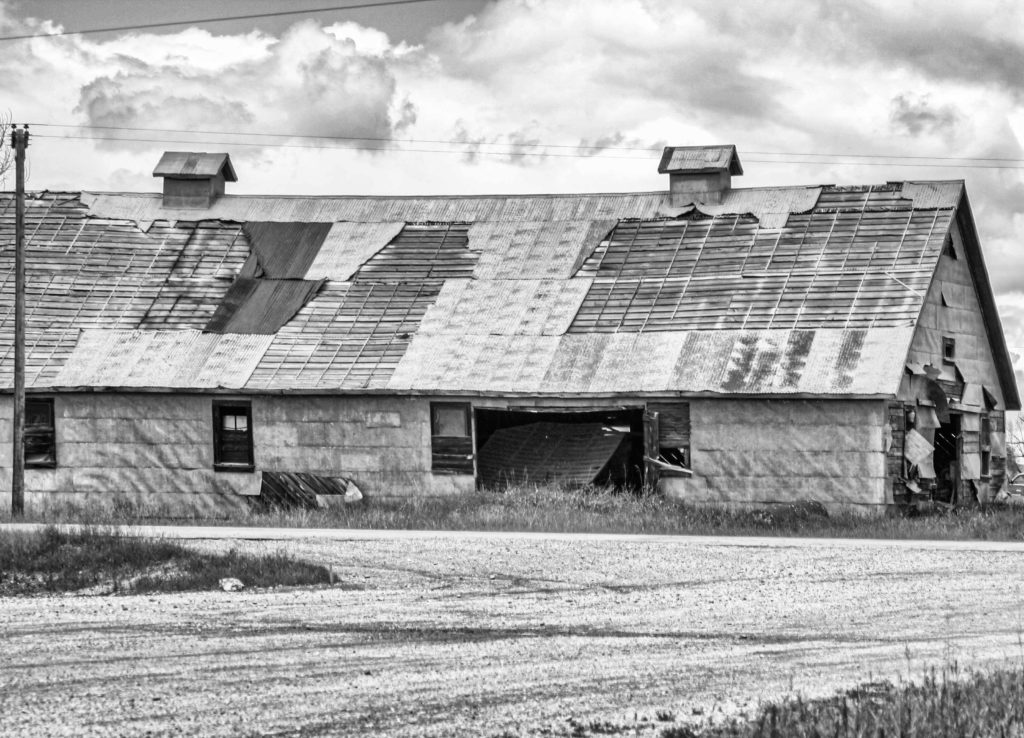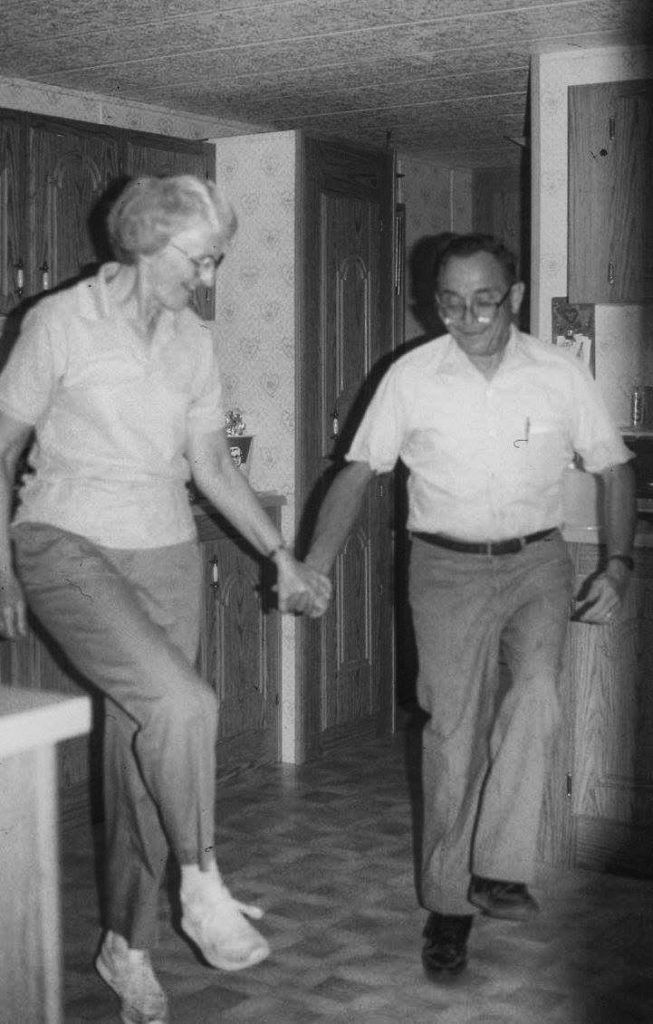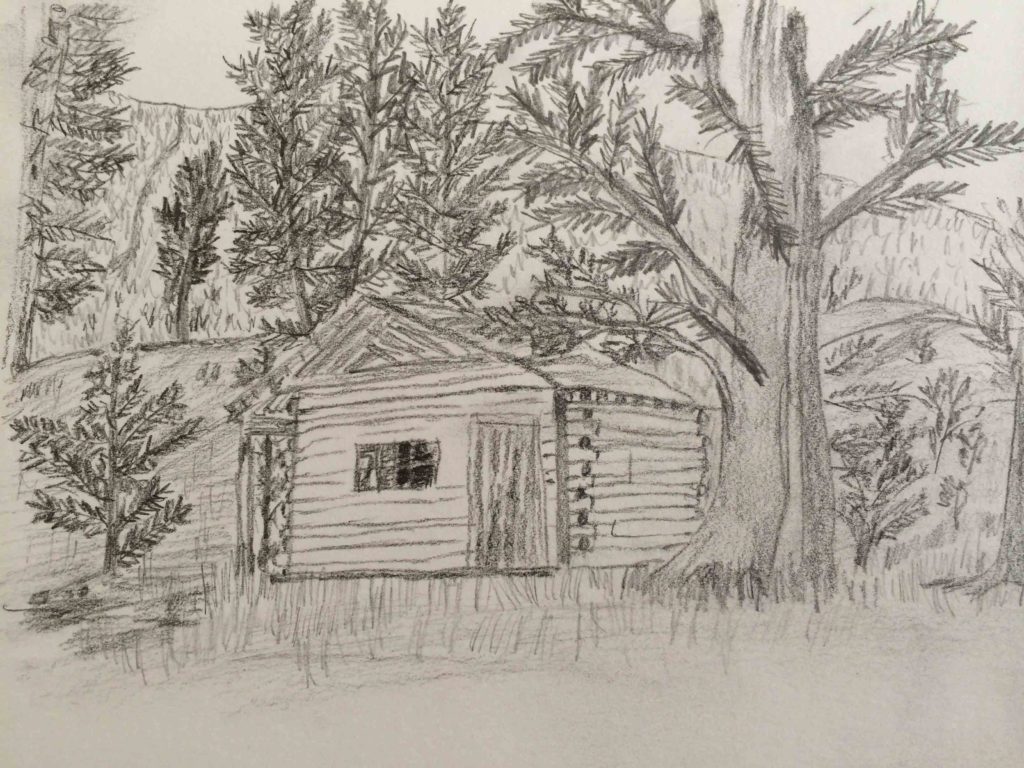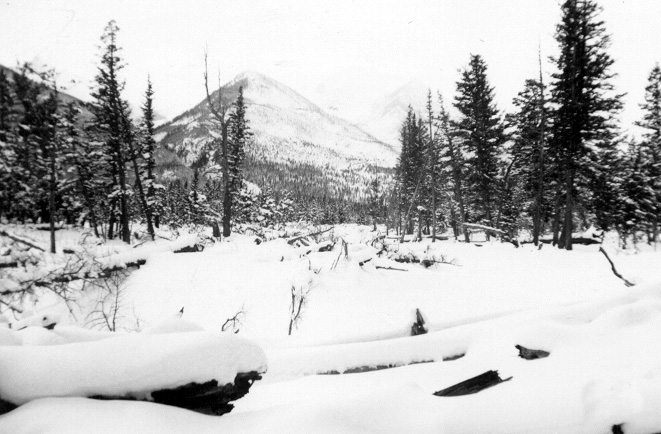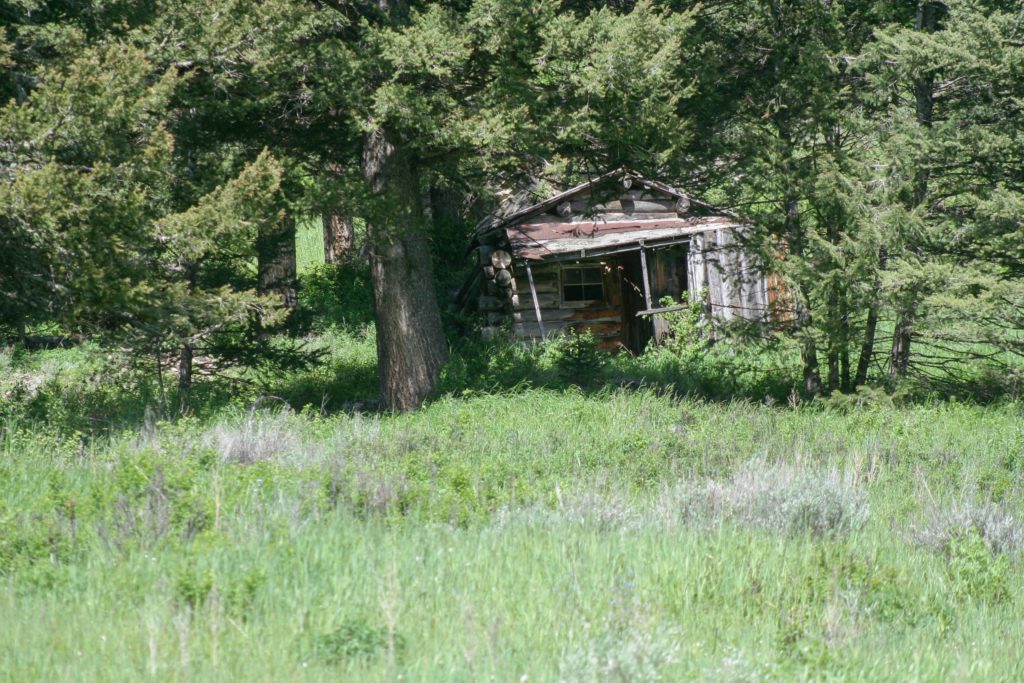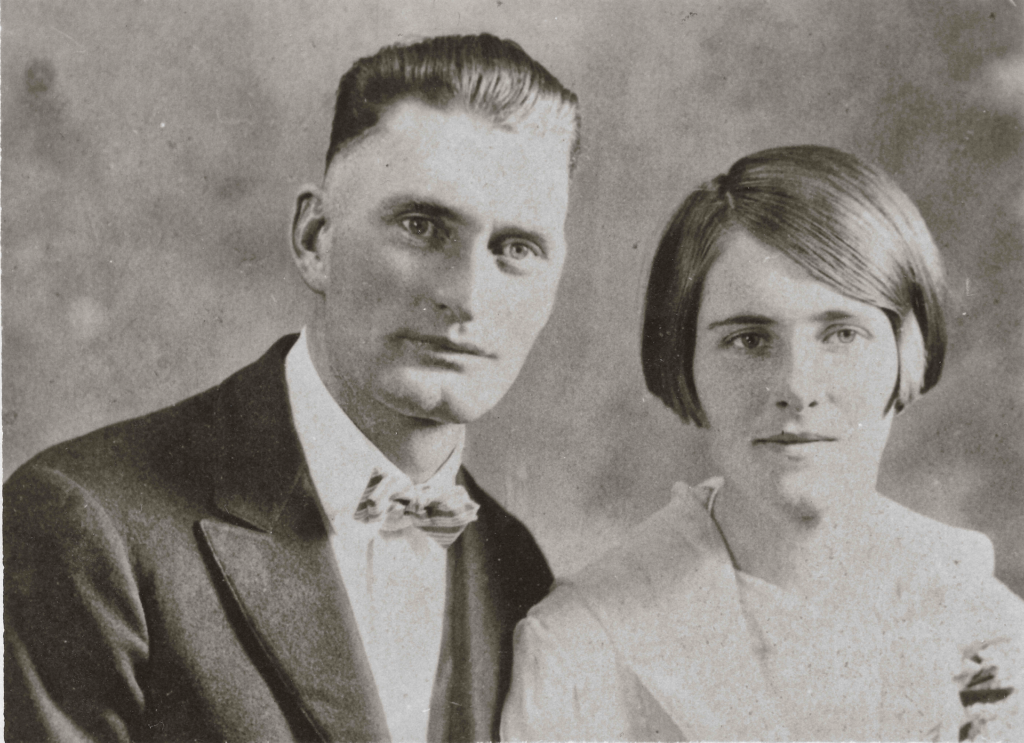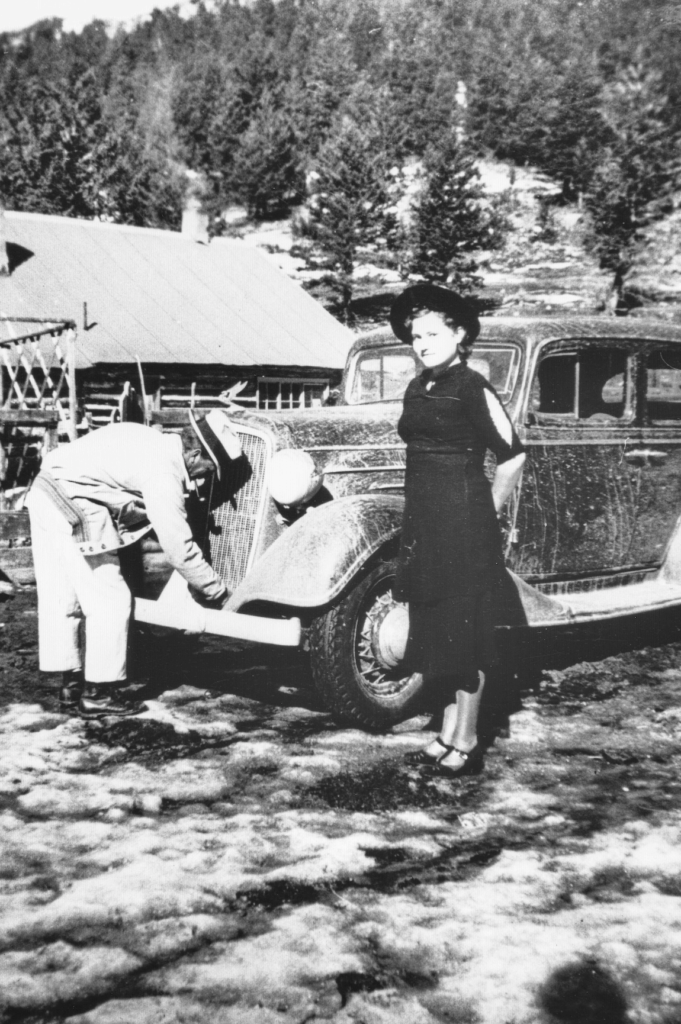My Guest Author today is my Granddad as he recounted this tale to my Dad. Among his many skills, his brother Buster was also a horse trader.
In his younger days, Buster, my brother, was into horses. He had some skittish ones. He was lucky except for the times he got thrown, rolled on, or dragged. He managed to stay topside on broncs which other people could not ride. And then he got into automobiles ‑ Model T’s. He owned and operated on several of them.
The Model T ran with bands and not a shift. You held low and reverse in with your foot. Sometimes the low went out and when you came to a big hill or bad spot a driver would have to turn his outfit around and back through. Buster burned the low band out several times. Most of the times in bad places. Well, in nice places, a person didn’t have to run the devil out of one and burn out the bands.
Buster had his Model T on a steep road near Great Falls. The brake burned out, which was not unusual. The Model T went flying down the mountainside. It was a crooked road with canyon walls and deep gorges. However, there was one thing about the T’s. You could band down when the brakes went out. That is, you just pushed in the low pedal and the Ford would slow down.
Buster pushed his pedal. The outfit ground to a moderate speed and smoke started flying from the bandbox. Low gear burned out. The T Model gave a sigh of relief and hurried down the hill. It leaned over on the corners and rattled and banged to let everything know that it was coming and that things better get out of the way.
It even had Buster nervous, so it must have been going at a pretty good rate. Anyway, he said that it was going too fast to fall into the canyon when it leaded over and only lightly touched the outer edge of the road with the outside wheels before it got back on solid ground. Centrifugal force and luck can be necessary neighbors.
Buster’s luck also related to which automobile he was driving. Buster had three Model T’s. One of them had the bad habit of folding its top when it hit rough roads. This was the auto that he drove into Sumatra when the top fell down. With the top down, a fellow couldn’t see where to drive. Not that it mattered, roads were just worn places across the prairies and were sometimes more rutted and rocky than the fields beside them. It was uncomfortable for the driver and passenger, so Buster got out his knife and cut head holes in the top. He and Mutt Sherod wore the T Model into town.
Ben Ziemer lived out in the Blackfoot country, about seventy‑five miles out. He traded horses. Ben had come from Germany and had several brothers over there in the German army. When the Yankees got involved in World War I, Ben said he wouldn’t go and shoot at his brothers. One thing for sure, the Montana neighbors knew that Ben wasn’t afraid of war. He wasn’t afraid of anything because he horse traded with Buster Knapp.
About this time Buster decided he could get along with two Model T’s instead of three, so he traded for a motorcycle. This was just what he needed to test his streak of good luck. Possibly this would have been the end of Edgar Knapp ‑ commonly known as Buster ‑ except for a bit of good fortune. Ben Ziemer came into town to a dance. He filled his foot‑wide, ten‑foot‑high frame, but was hungry for a horse trade. It ended up with him trading five horses for Buster’s newest outfit and its sidecar.
The price was agreed upon. Ben went out to get the cycle and go with Buster for a demonstration ride. He folded into the sidecar, knees bent up to his ears, and Buster wound out the motorcycle. It wasn’t that Buster was an expert, it was just that he had a streak of luck and hadn’t been killed on the thing yet. They took a turn around the corral. That was a good place to try out a fast horse and should work for a motorcycle.
Ziemer clutched the edges of the sidecar, he was swinging wide on the curves. His knuckles were white, but he had a lot of grip in them. A panel fence was on one side of the track. This was a snow fence, which stopped the snow from drifting the corral full.
Each circle was faster than the previous one. Each circle saw the sidecar whipping closer to the snow fence. About the fourth go around the outfit hit the fence midway between the motorcycle and the sidecar. It was a grand wreck. The bike went one way, the sidecar the other. The driver and passenger took independent routes through the air.
They didn’t have parachutes, but there wouldn’t have been time for them to open. They fastened the bike and sidecar together. It was still battered. “Well now, I just don’t know about that trade,” Ben said.
“We’ll just knock off a couple of horses,” Buster answered. This was another piece of good fortune. Good enough to get rid of the motorcycle, better to get three horses instead of five. It likely saved a lot of fret and worry later on down the trail.
